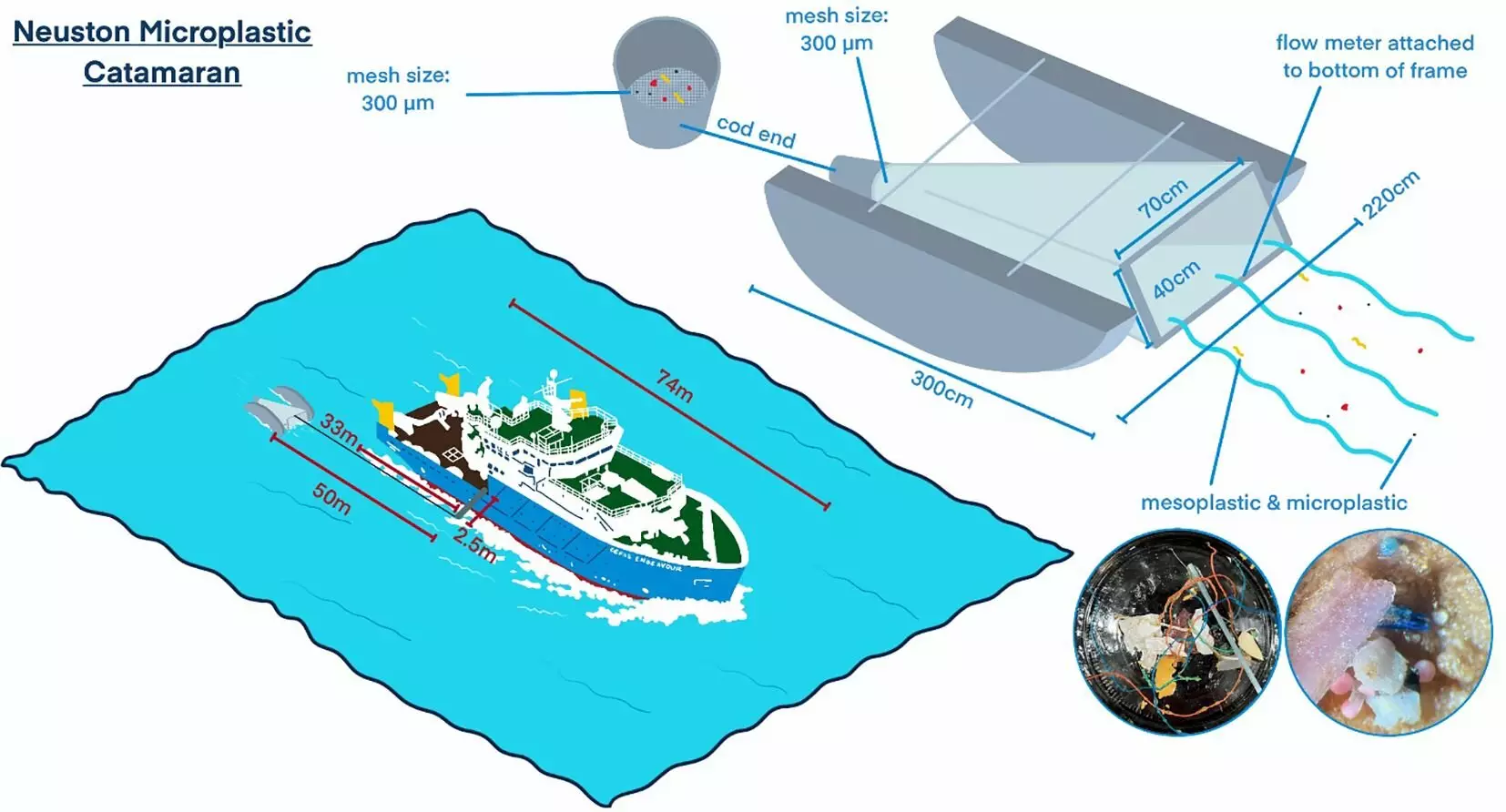Microplastic pollution has surged into the spotlight in recent years, capturing the imagination and concern of environmentalists and the general public alike. While images of marine life entangled in floating debris or microplastics hidden within clean sands paint a vivid picture, the real extent and implications of this pollution are far more complex. It is estimated that millions of tons of plastic end up in the ocean annually, with rivers acting as key conduits of this ecotoxicological crisis. This article will explore newly revealed findings about microplastic concentrations in the North Sea, highlighting the urgent need for targeted action against this pervasive problem.
Quantifying the impact of microplastics systematically becomes paramount when considering the staggering figure of up to 12.7 million tons entering the ocean each year. This pollution emerges from diverse sources: municipal waste mismanagement, industrial activities, and even maritime operations related to shipping and fishing. However, the visible accumulation of plastics on the ocean’s surface often belies the unseen reality below. The complexity of microplastic dispersal raises questions about where these tiny contaminants accumulate.
Recent research spearheaded by Dr. Danja Hoehn and her colleagues has shed light on this issue by identifying the North Sea as a key area for microplastic accumulation. Their innovative approach utilized a specialized Neuston Microplastic Catamaran, a vessel engineered to capture surface plastics and measure their concentrations effectively. The findings revealed sharply concentrated zones, particularly in the coastal Southern Bight, with staggering peaks recorded at over 25,000 items per square kilometer.
Understanding the makeup of these microplastics is essential for addressing their origins and potential impacts. The overwhelming majority found in the North Sea were fragments of polyethylene, polypropylene, and polystyrene. This distribution reflects common consumer products ranging from shopping bags to packaging materials. Notably, while microbeads—previously common in cosmetic products—have been banned in the U.K. since 2018, their persistence indicates that ocean currents continue to transport plastic waste from other regions, underscoring a global issue.
Compounding the situation, the research uncovered additional larger contaminants, including mesoplastics and macroplastics—but these appeared in significantly lower concentrations. Still, their existence illuminates the broader ecological ramifications of plastic pollution, such as potential harm to marine wildlife and ecosystems.
Despite the alarming data from the North Sea, a global perspective reveals that these concentrations are, in fact, lower than incidents reported in other parts of the world. Comparatively, regions like northwest Spain have recorded microplastic concentration levels reaching as high as 254,000 items per square kilometer. Such discrepancies raise imperative questions regarding regional pollution management policies and the effectiveness of varying international efforts.
In the face of overwhelming statistics and alarming trends, awareness is paramount. Initiatives such as the U.K.’s Marine Strategy aim to create better monitoring frameworks for microplastics and improve sediment indicators in marine environments. Similarly, the North-East Atlantic Environmental Strategy focuses on systematic reductions in marine litter inputs. These coordinated efforts reflect a growing recognition that plastic pollution is not merely a local issue, but a profound global challenge necessitating united action.
What Lies Ahead: Strategies for Mitigation
The urgent demand for plastics, which surpasses 400 million tons each year, emphasizes the necessity for immediate innovation in waste reduction and recycling strategies. Understanding and addressing microplastic contamination require a multifaceted approach, incorporating advancements in technology, policy reform, and public awareness campaigns. These initiatives must prioritize scientific research, encouraging international cooperation to establish legally binding commitments aimed at reducing and ultimately halting plastic pollution.
The emerging data on microplastic pollution in the North Sea serves as both a wake-up call and an invitation for concerted global action. The shocking concentrations and composition patterns reveal a pressing environmental crisis that goes beyond visual aesthetics, extending to the health of marine ecosystems and the longevity of oceanic resources. Sustainable pathways are available, but they demand cooperation across nations to protect fragile marine environments for future generations. Addressing microplastic pollution is not merely an environmental obligation—it is a reflection of our collective commitment to the health of the planet.

